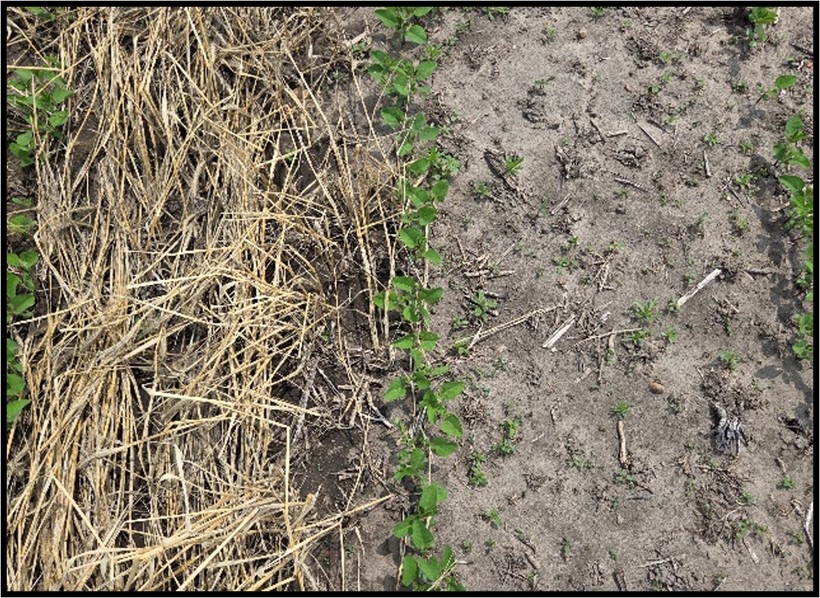Weeds continue to be increasingly challenging each year with herbicide resistance concerns on the rise, persistent challenging environmental conditions, and further spreading across the state (particularly with waterhemp). As a result, it is not viable to rely solely on herbicides for successful weed management anymore. Rather, we need to use multiple, diverse strategies that can be found in our “Weed Management Toolbox” (Fig. 1).
Right now (beginning of October) is an ideal time to start initiating our 2026 weed management plan and using a diverse strategy by drilling cover crops following crop harvest. Cover crops can be beneficial for numerous reasons, but from a weed management standpoint, they can reduce weed seedling emergence, slow weed growth, reduce weed biomass, and limit seed production—especially for small-seeded annual weeds (Fig. 2). For example, research has shown approximately a 30 to 50% reduction in waterhemp emergence with a 75% reduction in waterhemp biomass when competing with a cereal rye cover crop. This beneficial effect is often directly linked to the amount of cover crop biomass. Meaning, a successful fall planting (drilling is typically better than broadcast) a few weeks before the first frost is critical to giving the cover crop the best chance for success. Additionally, allowing the cover crop to grow as close as possible to the cash crop planting date the following spring will make sure to take the greatest advantage of shading, competition, and physical suppression of weed emergence. However, careful consideration and advanced planning for cover crop termination should be made so as to not allow the cover crop to end up being a problematic weed in the cash crop. For recommendations on cover crop termination, check out this previous Purdue Fact Sheet: “Successful Cover Crop Termination with Herbicides.”

Figure 2. Demonstration of cereal rye (left) suppressing summer annual weeds compared to a bare soil surface (right).
There are a variety of cover crop seed options that can aid in weed management efforts. However, cereal rye is typically the standard recommendation due to its biomass capabilities, termination ease, and sourceability. The publication, “Post Corn, Going to Soybean: Use Cereal Rye,” provides more in-depth information regarding this cover crop option. Despite cereal rye typically being an all-around good option, there have been instances where it has negatively impacted corn growth and yield. As a result, if planning to plant corn, it is recommended to either terminate cereal rye 2 to 3 weeks prior to planting or use an alternative cover crop mixture such as oats and tillage radish. Additional tips for this cover crop practice can be found in the following publication: “Post Soybean, Going to Corn: Use Oats/Radish.”
As I started out this article, weed management should be thought of as a toolbox. Just like doing repairs around the home or farm: a single hammer can do a lot of jobs, but if that’s all you use, eventually you end up smashing your thumb or destroying the thing you’re trying to fix (not that I’m speaking from experience). So, using some of the other tools in that toolbox will make the job more successful overall. The same holds true for using cover crops in our weed management efforts in conjunction with other strategies such as herbicides, crop rotation, precision equipment, etc. None of these should be considered standalone weed control practices, but rather used together in an integrated weed management strategy.
I hope your 2025 harvest is going smoothly, and that y’all consider initiating your 2026 weed management efforts by planting cover crops in the near future. If you have any questions, please don’t hesitate to reach out! Additionally, If you’re interested in even more resources that discuss the weed suppression capabilities of cover crops and recommendations for their use, check out the following:
- GROW Cover Crops Webpage,
- “Herbicide Rotation Restrictions for Cover Crops and Fall Forages,”
- “Residual Herbicides and Fall Cover Crop Establishment.”



